Key takeaways:
- Creating an engaging event agenda involves crafting a narrative that aligns with participant interests, incorporating varied session formats, and maintaining energy levels.
- Strategically placed breaks and interactive sessions are essential for enhancing participant satisfaction and fostering meaningful connections.
- Utilizing event management tools like Trello and Canva can streamline agenda creation, while real-time collaboration enhances creativity and team ownership.
- Incorporating live polls, organic networking opportunities, and unexpected elements boosts attendee engagement and transforms the event experience.
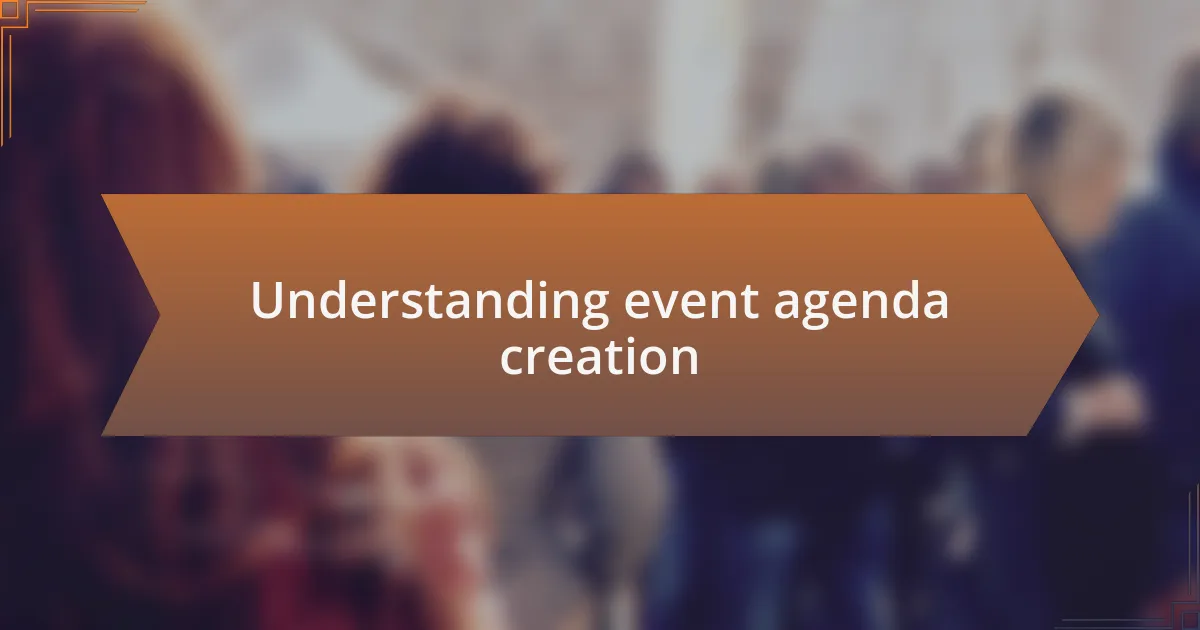
Understanding event agenda creation
Creating an engaging event agenda is more than just listing times and topics; it’s about crafting a narrative that guides participants through an experience. I remember my first large-scale event where I realized that merely outlining the schedule wasn’t enough. Attendees responded so much better when I tied each segment to a broader theme or goal, making the agenda feel cohesive and purposeful.
Think about your audience: what do they really want to take away from the event? This question drove my approach when I was designing an agenda for a workshops series. I made sure to include interactive sessions in between talks—this not only kept energy levels high but also fostered connections among participants. It taught me that a well-structured agenda can transform passive listeners into engaged participants, actively contributing to discussions.
I’ve also found that mixing different formats—such as workshops, panels, and networking breaks—keeps the momentum flowing throughout the day. I had an event where we strategically placed a fun icebreaker right after a dense session, and the shift in atmosphere was palpable. It’s this interplay that makes the agenda not just a timekeeper but a dynamic tool for engagement and learning. How can you leverage this in your own event planning?
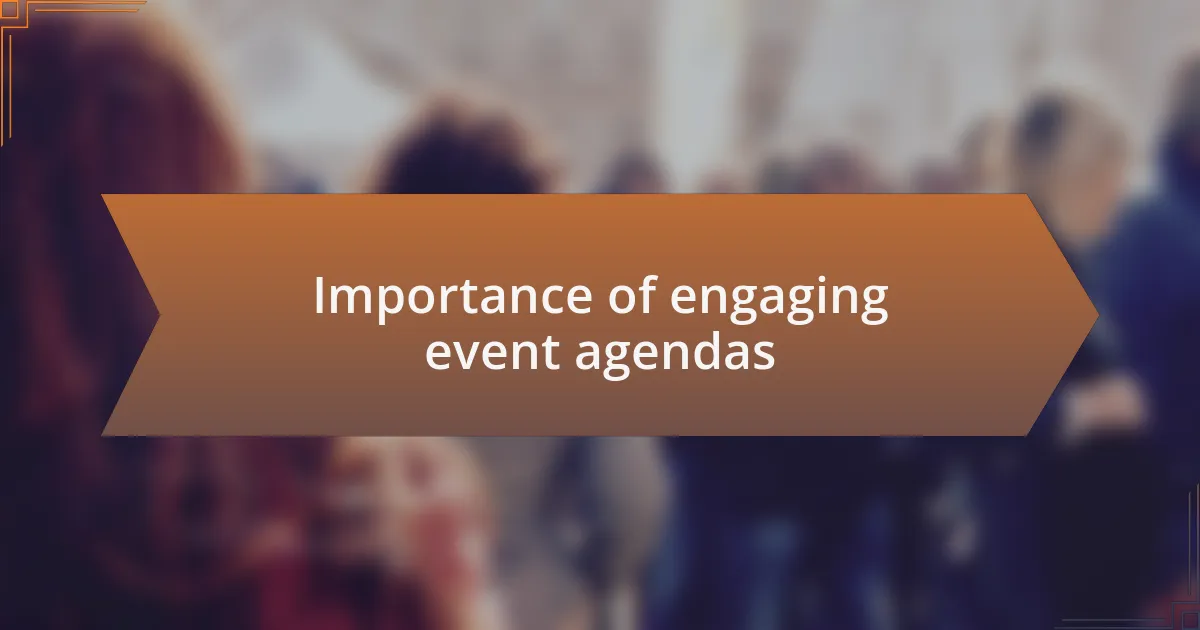
Importance of engaging event agendas
An engaging event agenda plays a crucial role in setting expectations and enhancing overall participant satisfaction. I once received feedback from attendees at a leadership summit who expressed their appreciation for a well-paced agenda that included varied session types. Their enthusiasm after the event was tangible; they felt more fulfilled because each segment resonated with their interests and professional goals.
When I think back to another event I organized, I realize how vital it is for an agenda to energize rather than exhaust. I incorporated breaks strategically after high-intensity sessions, which allowed attendees to reflect and recharge. The difference was clear; these intentional pauses sparked invaluable conversations, making the connections formed during the event even more memorable. Isn’t it fascinating how a thoughtfully designed agenda can turn a series of discussions into meaningful exchanges?
Moreover, I’ve discovered that aligning each agenda item with overarching themes can create a narrative that pulls attendees in. For instance, integrating a storytelling session between technical workshops helped to break down complex concepts, making them relatable. It’s a reminder that agendas shouldn’t just inform—they should inspire and innovate, leading to a lasting impact long after the event concludes.
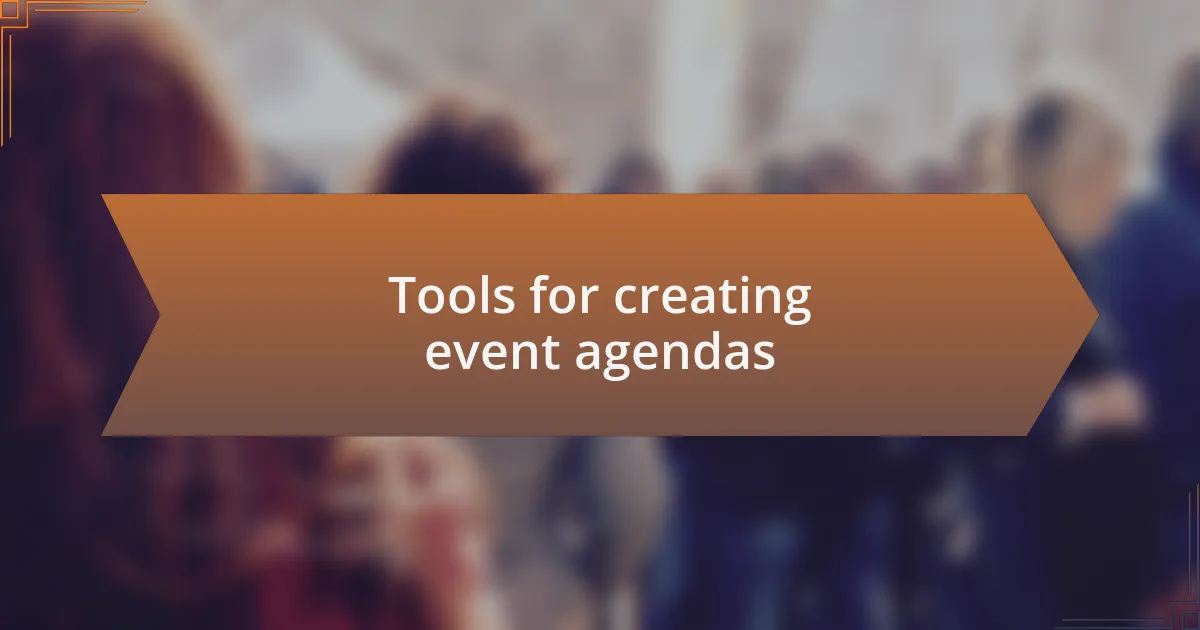
Tools for creating event agendas
When it comes to creating engaging event agendas, I’ve found that using event management software can be a game changer. Tools like Asana or Trello allow me to visualize the flow of the event while ensuring that all team members are on the same page. I remember a time when I used Trello to map out an annual conference, and the ability to easily shift sessions around based on feedback was invaluable. Have you ever felt overwhelmed by last-minute changes? These tools help streamline corrections, making it much less stressful.
Another tool I appreciate is Canva for designing visually appealing agendas. It’s amazing how a well-designed agenda draws people in, making them excited about participating. In one of my events, I created a colorful agenda that incorporated the event’s branding. I still recall the smiles on attendees’ faces when they received it, as if they were holding an invitation to something special. I often wonder how much first impressions matter; a beautifully crafted agenda certainly set the tone for an engaging experience.
Lastly, I can’t underestimate the power of Google Docs for real-time collaboration. I’ve used it for team brainstorming sessions, allowing everyone to contribute when inspiration strikes. There was one occasion where a colleague added a new session topic that resonated with many, turning a good agenda into an exceptional one. This real-time input not only enhances creativity but also builds team ownership of the agenda. Isn’t it rewarding when everyone feels they’ve had a hand in crafting something memorable?
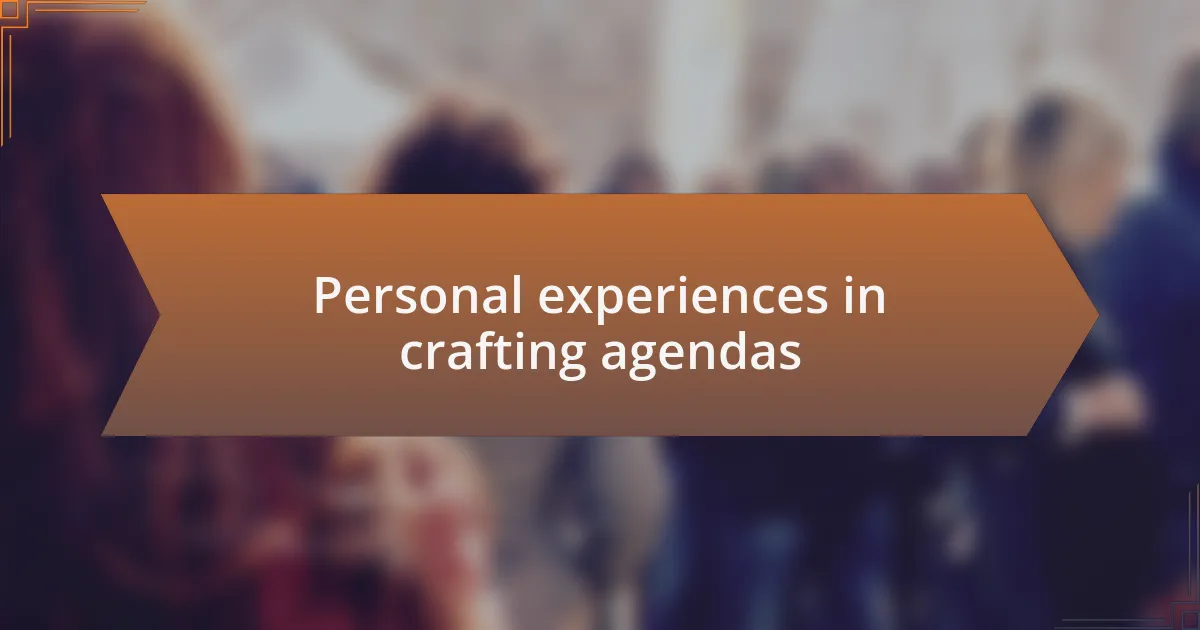
Personal experiences in crafting agendas
While crafting agendas, I’ve learned to prioritize the audience’s needs first. For instance, during a workshop I organized, I started by surveying potential participants to understand their interests. This approach not only made the agenda relevant but also ensured higher engagement—after receiving the final agenda, many attendees expressed excitement about topics they had specifically requested. Have you ever wondered how a little input can dramatically shape event participation?
Sometimes, I’ve faced the challenge of tight schedules. At one conference, I was tasked with fitting an extensive lineup into a half-day event. I opted for a series of lightning talks, each lasting just ten minutes, which kept the energy high and the audience engaged. It was exhilarating to witness how fast-paced presentations created a sense of urgency and excitement. Isn’t it fascinating how you can tweak format to accommodate constraints while still delivering value?
Another memorable experience was facilitating a brainstorming session with my team to make the agenda more interactive. We decided to incorporate breakout sessions where participants could delve deeper into specific topics. This shift transformed the agenda from a simple rundown into a participative experience. Seeing attendees actively engage and share ideas during these sessions truly highlighted the power of collaboration. Have you ever seen an agenda evolve into something more dynamic simply by involving others?
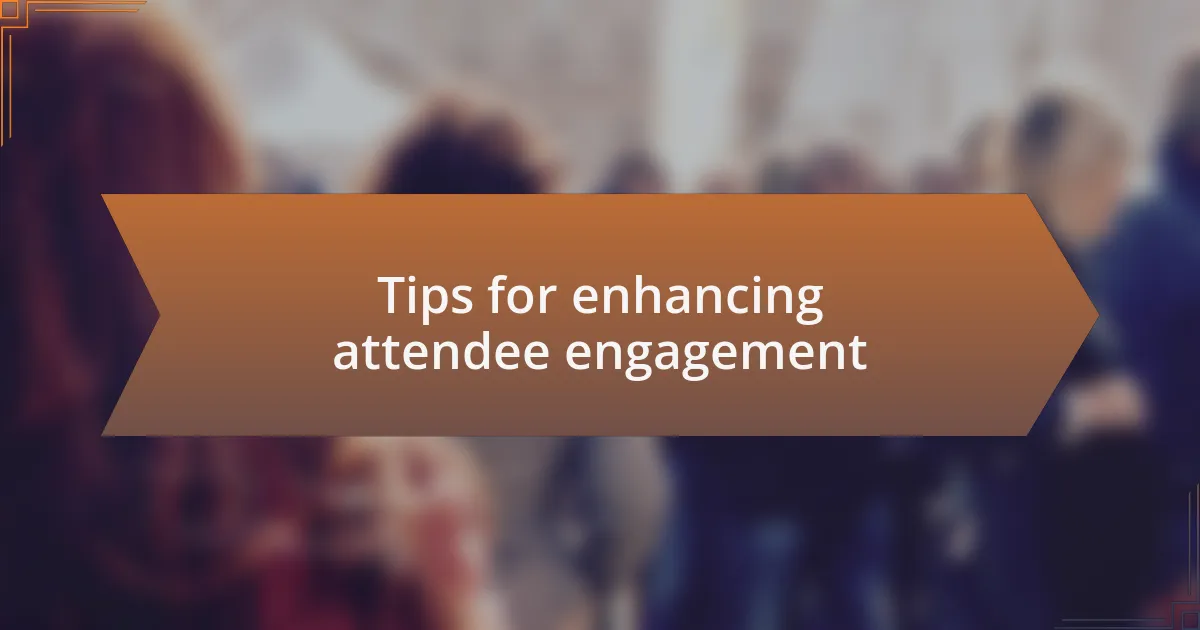
Tips for enhancing attendee engagement
Encouraging attendee participation can lead to a more vibrant atmosphere. One technique I’ve found effective is integrating live polls throughout the event. At a recent seminar, I used instant polling to gauge audience opinions mid-session. It not only sparked lively discussions but also made everyone feel like their voices mattered—who wouldn’t want to be part of a conversation that directly influences what happens next?
Another strategy that has worked wonders is to create opportunities for networking that feel organic rather than forced. Once, I arranged a casual “coffee chat” segment where attendees could gather around tables dedicated to specific topics of interest. This approach led to deeper conversations and forging connections that would have otherwise remained overlooked. Have you ever noticed how the best interactions occur when attendees simply share their insights in an unstructured setting?
Finally, incorporating unexpected elements can significantly elevate engagement levels. During one event, I introduced short, fun icebreaker activities between sessions. I still remember the laughter and camaraderie that filled the room as attendees participated in these quick games. It’s fascinating how a little unpredictability can break the ice and turn a conventional agenda into an enjoyable experience. Why not experiment with adding a surprise element to your next event?